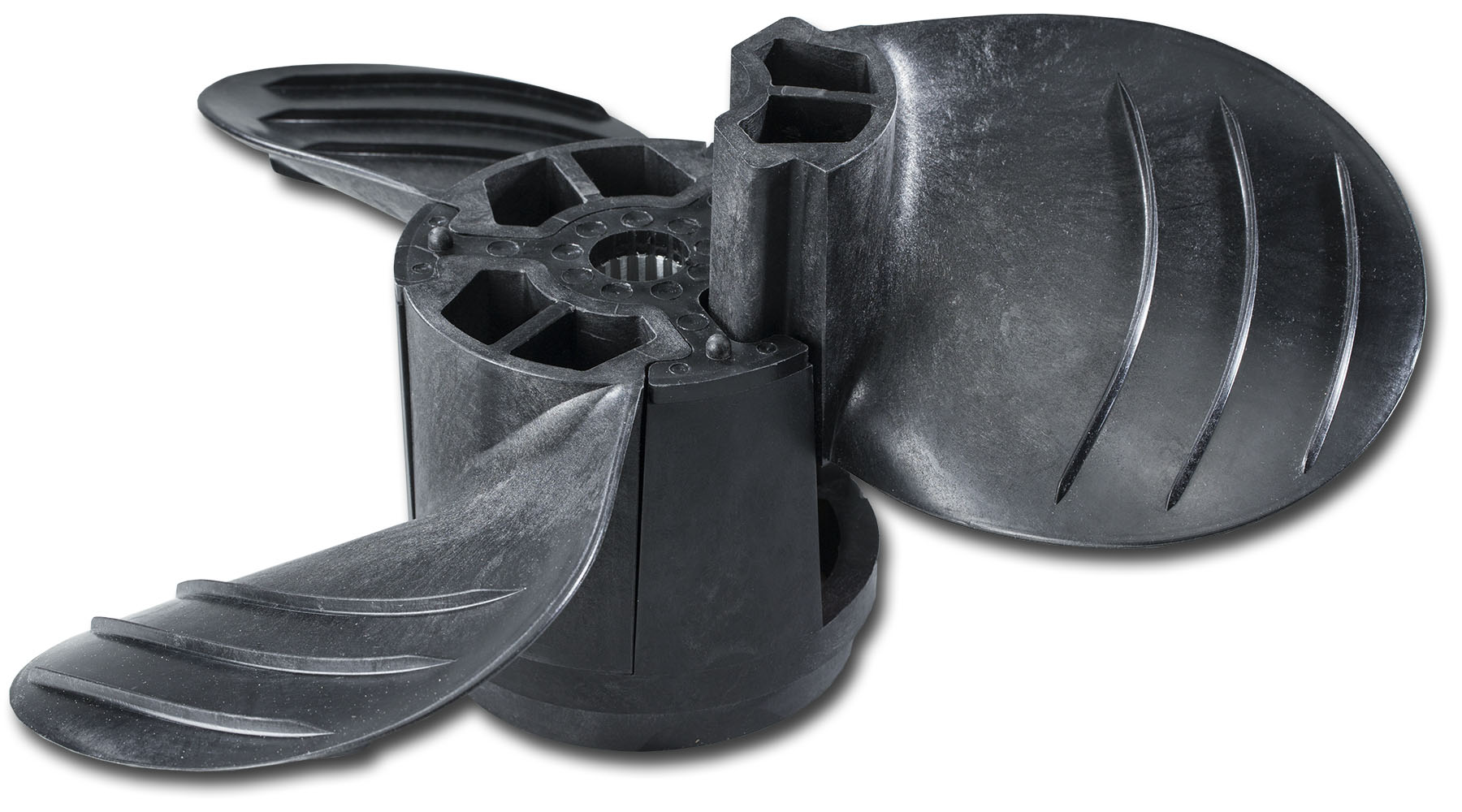
Piranha Propellers, a manufacture of composite replacement propellers, has used long glass fiber reinforced thermoplastic composite developed by U.S.-based PlastiComp to make stronger replacement parts.
The composite propeller design consists of a center hub with three or four slots for inserting interchangeable blades of varying size and pitch. Easily changing a damaged or broken blade instead of the entire prop lowers ownership cost, and interchangeability also allows tuning of propulsion thrust to meet a boats intended use, for either speed or transporting loads.
When a metal propeller blade strikes a submersed obstacle, it can permanently bend or break, with severe impact forces often causing additional costly damage to the motors lower unit. However, with a Piranha composite propeller, the blades are able to flex and absorb the energy from minor impacts. At higher impacts, the blades, which have lower shear strength than metal, sacrifice themselves by breaking and releasing energy before transferring damaging forces to the motors lower unit.
Demanding applications
Lower unit repairs can cost up to several thousand dollars, making a US$25 composite replacement blade a considerable cost saver.
Piranha uses a Complet MT series long glass fiber reinforced nylon 6 composite from PlastiComp for all its propellers. The company formulated the range for maximum toughness to provide up to 40% more impact resistance than standard long fiber reinforced materials. The durability provided by the fiber composites makes them suitable for demanding applications like Piranha’s propellers.
This story is reprinted from material from Plasticomp, with editorial changes made by Materials Today. The views expressed in this article do not necessarily represent those of Elsevier.




